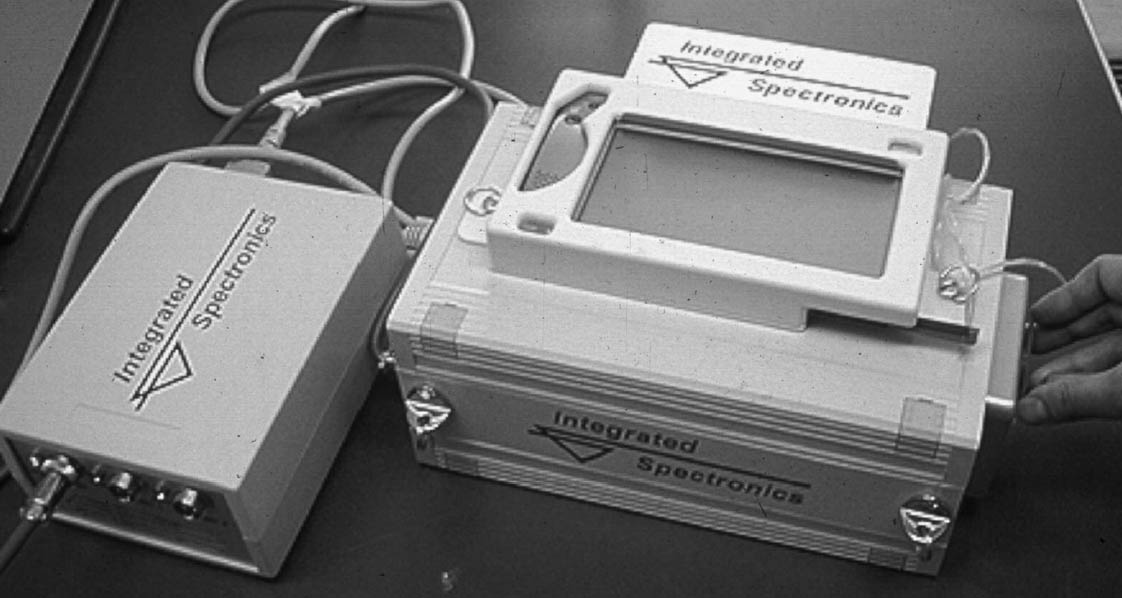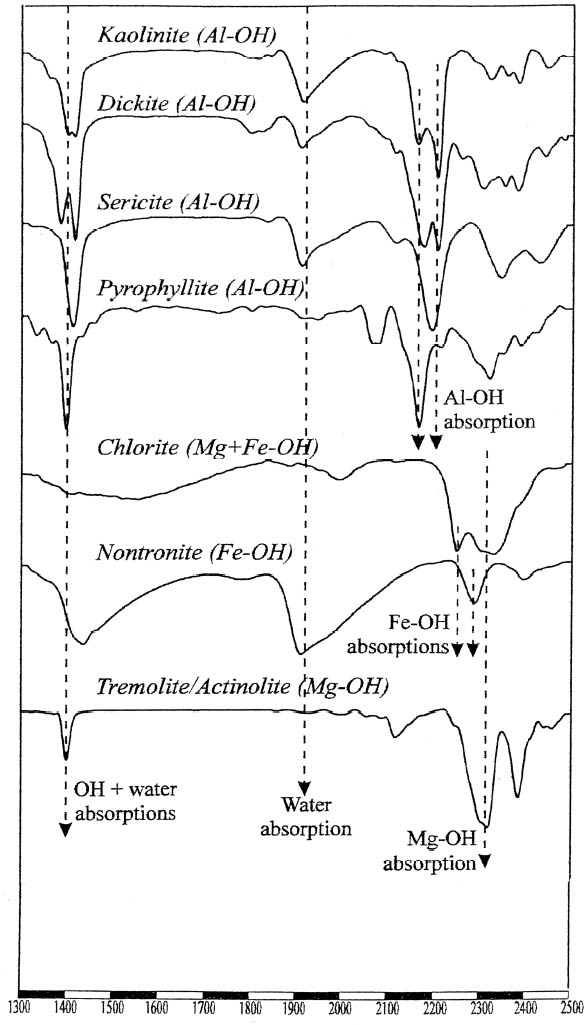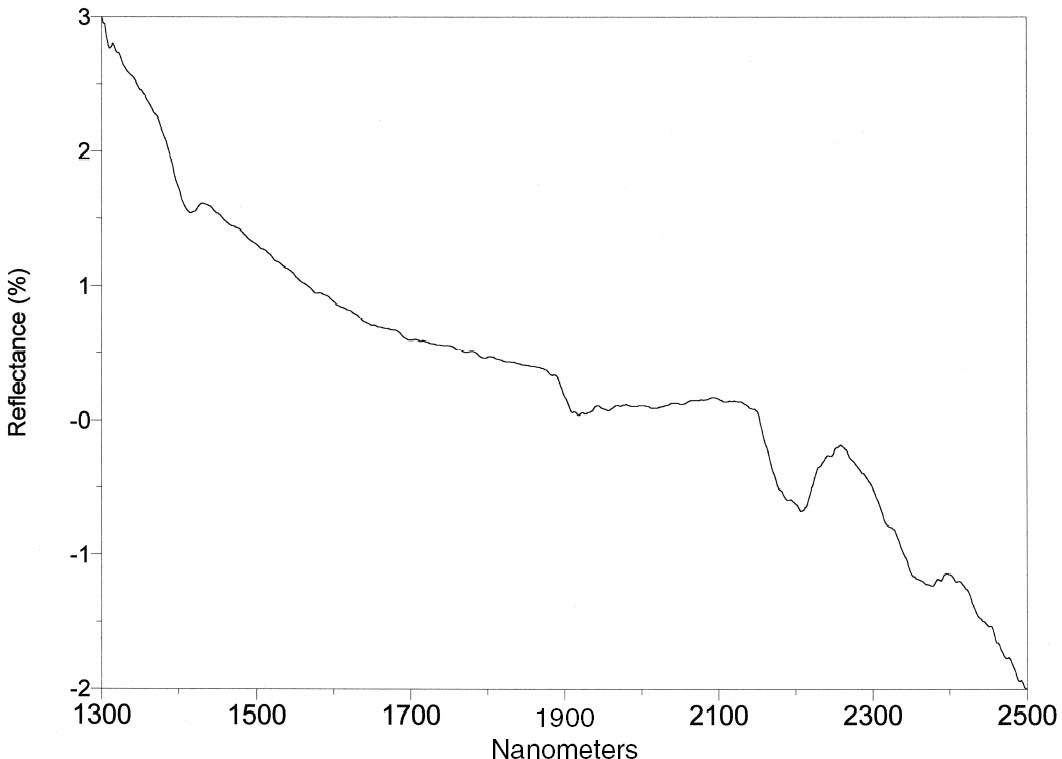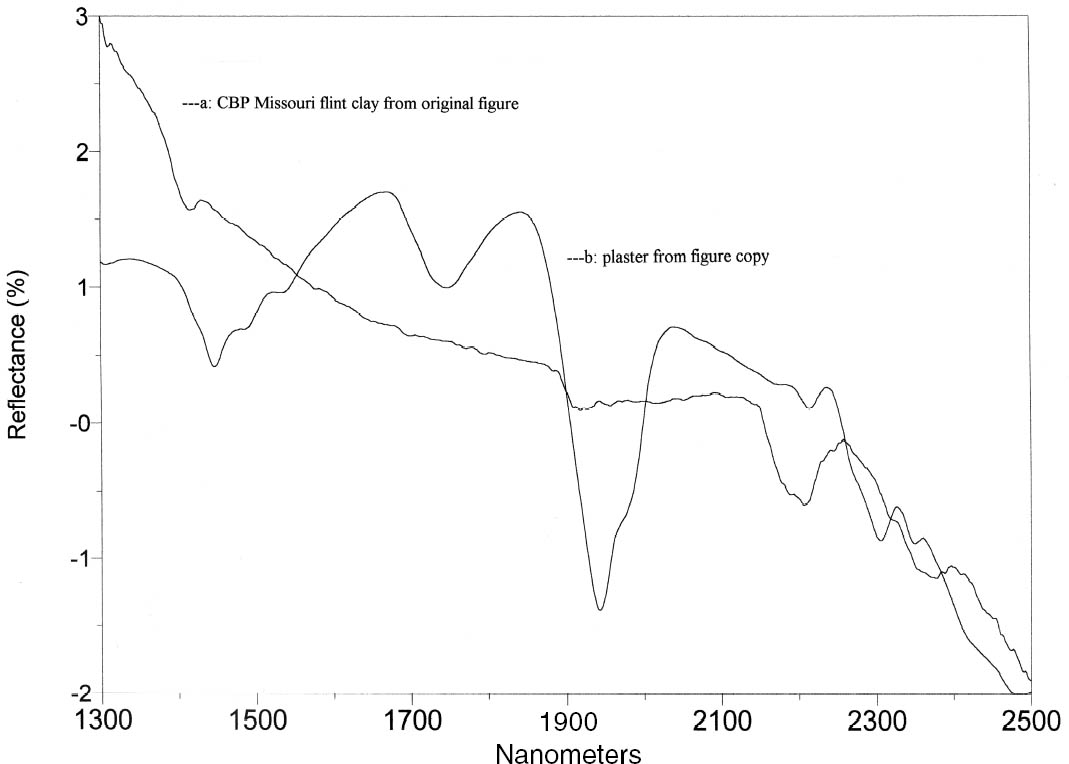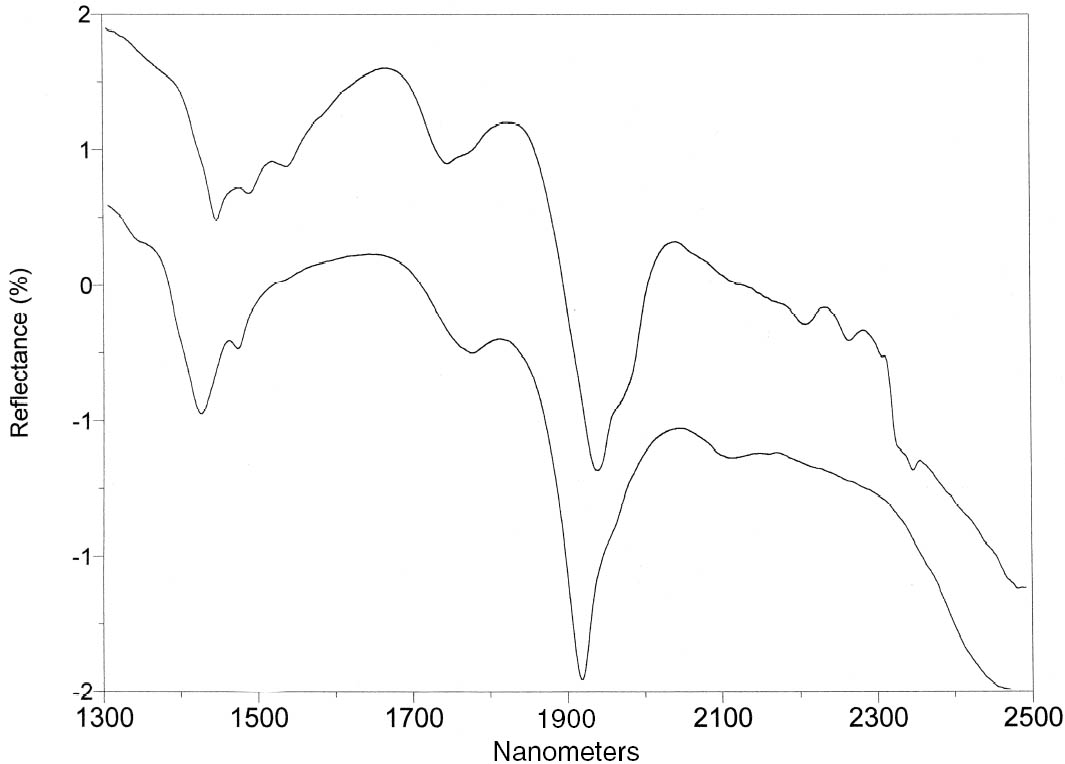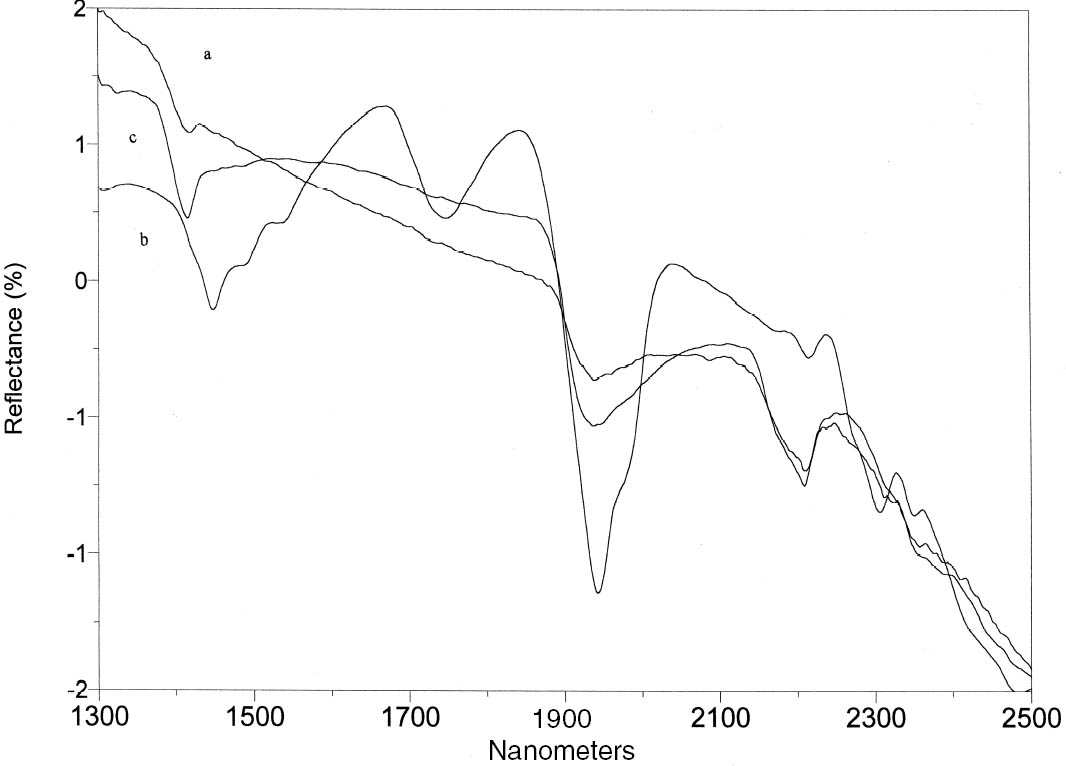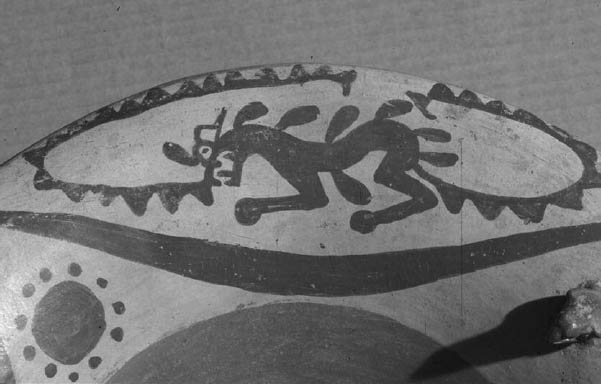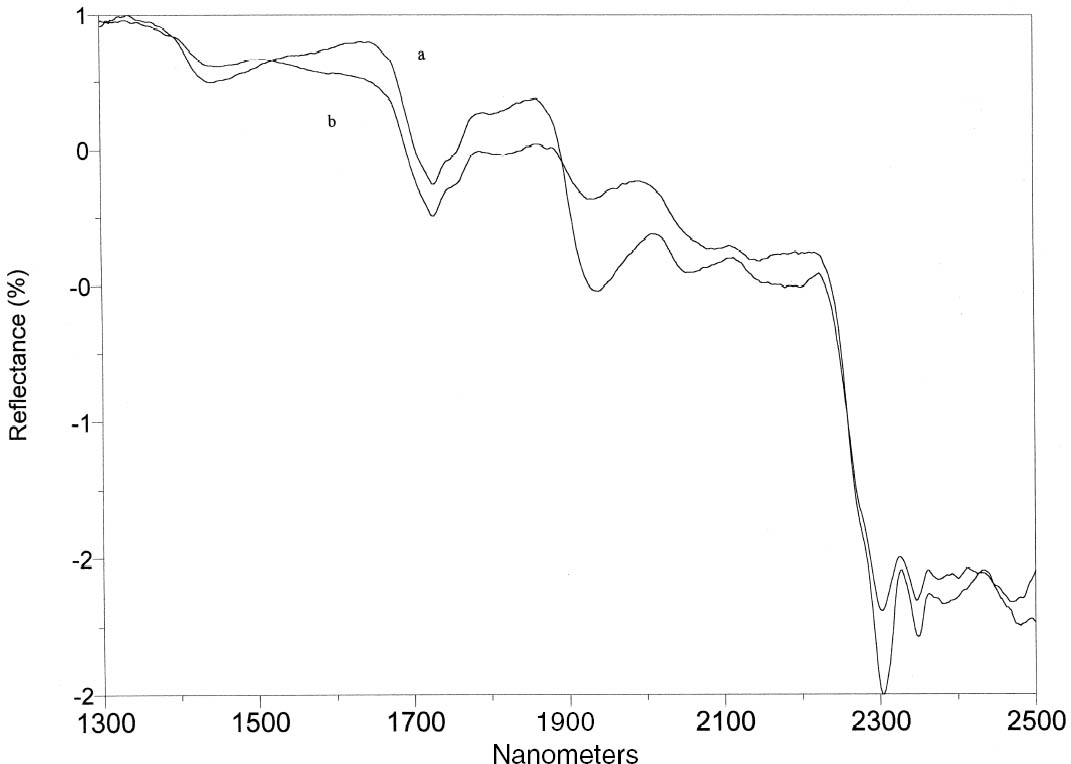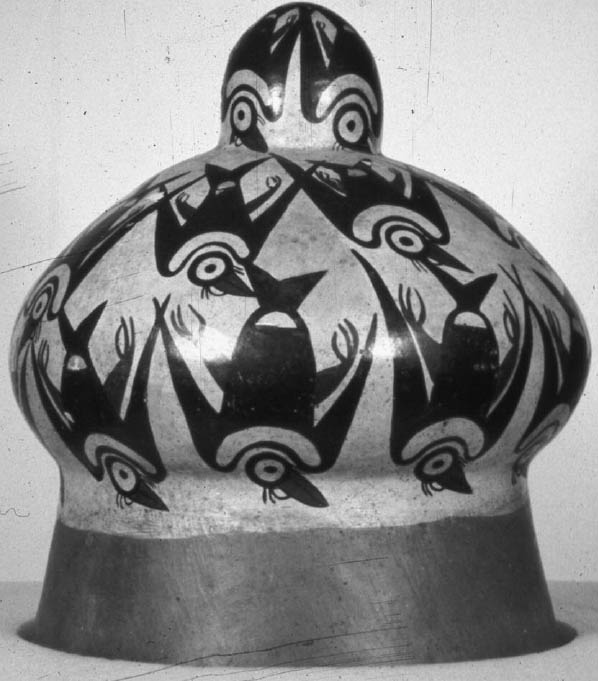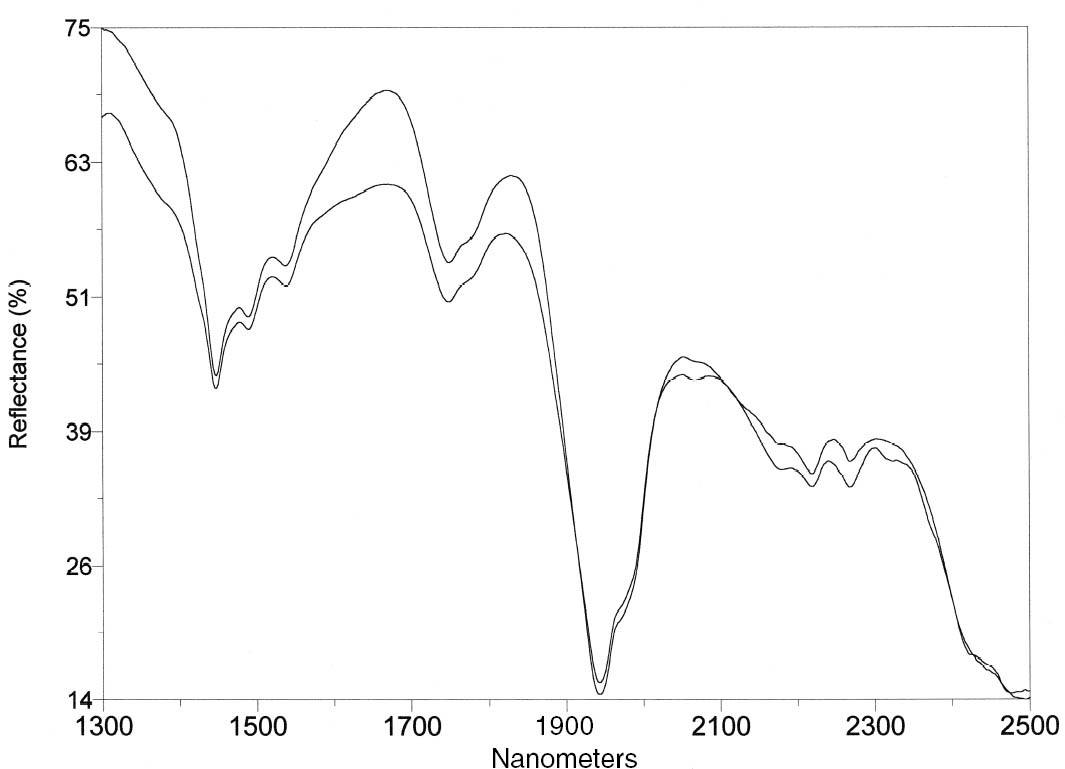USING A PORTABLE SPECTROMETER TO SOURCE ARCHAEOLOGICAL MATERIALS AND TO DETECT RESTORATIONS IN MUSEUM OBJECTSSARAH U. WISSEMAN, THOMAS E. EMERSON, MARY R. HYNES, & RANDALL E. HUGHES
ABSTRACT—A team of archaeologists and geologists demonstrates how a portable infrared mineral analyzer (PIMA), first used by Australian geologists for mineral exploration, can be applied to provenance and authenticity studies. PIMA spectroscopy can be used to characterize both original materials and restored sections on stone and ceramic artifacts, including coatings such as shellac. The instrument works especially well in museum settings because it is portable and nondestructive. PIMA spectroscopy will become increasingly useful over time as reference databases of archaeological and restoration materials are accumulated. TITRE—L'utilisation d'un spectrom�tre portatif pour identifier la provenance des vestiges arch�ologiques et pour d�tecter les restaurations sur des objets de mus�e. R�SUM�—Une �quipe d'arch�ologues et de g�ologues d�montrent comment un analyseur min�ral portatif � l'infrarouge ( PIMA-Portable Infrared Mineral Analyser), d'abord employ� par des g�ologues australiens pour faire de l'exploration mini�re, peut aussi �tre utilis� pour d�terminer provenance et authenticit�. En effet cet appareil de spectroscopie peut �tre employ� pour caract�riser les mat�riaux originaux et les sections reconstitu�es sur des objets en pierre et en c�ramique, par exemple pour identifier des enduits tels que la gomme laque. L'instrument est particuli�rement bien adapt� aux applications mus�ales parce qu'il est portatif et permet des analyses non destructives. Ce genre de spectroscopie deviendra de plus en plus utile avec le temps, alors que des bases de donn�es de r�f�rence seront cr��es sur les mat�riaux arch�ologiques et produits de restauration. TITULO—La utilizaci�n de un espectr�metro port�til para identificar el origen de materiales arqueol�gicos y detectar las restauraciones en artefactos de museos. RESUMEN—Un equipo de arque�logos y ge�logos demuestra como un analizador de minerales infrarrojo port�til ( PIMA-Portable Infrared Mineral Analyser), que fue utilizado por primera vez por ge�logos australianos en la exploraci�n de minerales, puede ser utilizado en estudios de proveniencia y autenticaci�n. Los estudios de espectroscop�a con PIMA sirven para caracterizar tanto los materiales originales, como los segmentos restaurados en artefactos de piedra y cer�mica, incluyendo capas superficiales tales como barniz. Este instrumento es especialmente �til dentro del museo porque es port�til y los an�lisis son no destructivos. La espectroscop�a con PIMA ser� cada d�a mas �til a medida que se recopilen tablas y bancos de datos de referencia de materiales arqueol�gicos y los utilizados en restauraci�n. T�TULO—Usando um espect�metro port�til para pesquisar materiais arqueol�gicos e detectar restauros em objetos de museus. RESUMO—Uma equipe de arque�logos e ge�logos demonstra como um analisador mineral port�til infra-vermelho ( PIMA-Portable Infrared Mineral Analyser), utilizado primeiramente por ge�logos australianos para explora��o mineral, pode ser aplicado em estudos de origem e autenticidade. A espectroscopia PIMA pode ser usada para caracterizar tanto materiais originais quanto partes restauradas de artefatos em pedra e cer�mica, inclusive camadas como verniz de gomalaca. O aparelho funciona especialmente bem em museus pelo fato de ser port�til e n�o-destrutivo. A espectroscopia PIMA se tornar� cada vez mais �til � medida que crescem os bancos de dados de refer�ncias de materiais arqueol�gicos e de restauro. 1 INTRODUCTIONInfrared spectroscopy has a long history in the field of conservation science in the characterization of many organic and inorganic materials (Derrick et al. 1999). Most of this work has been accomplished using stationary laboratory equipment operating in the mid-infrared (IR) range of the electromagnetic spectrum. At the University of Illinois, we have been using a portable infrared mineral analyzer (PIMA) that operates In this article we report on the operation of the PIMA spectrometer and selected applications of this instrument to museum conservation and authentication studies. 2 PIMA SPECTROSCOPYThe PIMA is an instrument first used by geologists in Australia, the United States, Canada, and South America to locate precious metals, assess ore quality, study the degree of crystallinity of minerals, and map zones of alteration in rocks changed by hydrothermal processes. At the University of Illinois, we are using the PIMA SP manufactured by Integrated Spectronics Pty Ltd., Australia, to study archaeological materials for the first time (Hughes et al. 1998; Emerson and Hughes 2000, 2001; Emerson et al. 2002; Emerson et al. 2003; Wisseman et al. 2002). This shoebox-size instrument can be operated in the field or in a museum setting. It is totally nondestructive; there is no induced radiation damage or sample modification. PIMA spectroscopy provides mineral identification in stone and low-fired ceramic artifacts as well as in candidate stone and ceramic source materials. It is an excellent precursor to standard laboratory analysis by the complementary technique of x-ray diffraction or more costly elemental techniques such as neutron activation analysis. The PIMA requires no sample preparation if a small, preferably flat, surface of the sample can be brought up to the 1 cm diameter window of the instrument (fig. 1). The PIMA uses the SWIR part of the electromagnetic spectrum (1300–2500 nanometers or 7692–4000 cm-1) and measures the reflected radiation from the surface of a sample, part of which will have been absorbed by the sample. These absorption features reveal the interatomic bond energies
The instrument can be held either horizontally or vertically (using a stand) and has settings that compensate for dark samples. One reading takes only 30 seconds, allowing the rapid collection of a large number of analyses. Measurements can be made on whole or partial artifacts, sherds, rock chips, thin sections, powders, and soil and sediment samples and cores. PIMA spectroscopy is also a quick way to get a preliminary, nondestructive assessment of compositional differences between original and restored areas without removing an artifact from its museum setting. 3 CAHOKIA FIGURINESThe large red stone figurines crafted by 12th-century Mississippian peoples at the site of Cahokia, near St. Louis, Missouri, are some of the most spectacular prehistoric works of art in North America. Examples of these figurines and effigy pipes have been found in archaeological sites within an area stretching from Wisconsin to Mississippi and from Oklahoma to Alabama. Representing both mythological and real individuals, they are a rich source for understanding Mississippian symbolism, iconography, and lifestyles (Emerson 1989). As a result of our archaeometric research, we were able to demonstrate that all these artifacts were created from Missouri flint clay quarries adjacent to St. Louis (Emerson and Hughes 2000; Emerson et al. 2003). Consequently, they represent a singular glimpse of Cahokia's inhabitants. As part of our sourcing project, we traveled across the eastern United States examining and analyzing Cahokia figurines in many museums. It was during the process of conducting PIMA analyses that the utility of the instrument in identifying areas of restoration became apparent. It happened quite by accident when we were conducting tests on two Cahokia figurines that have been curated since the 1930s. A number of large figurines had been excavated, but as is often the case, the accession records were not clear concerning which specimens had been retained and which had been transferred to other institutions. Since the specimens had been skillfully restored, it was not readily apparent which effigies were original and which were copies. Destructive analysis of the pieces was not possible because of their archaeological and artistic value and because of their importance to the Caddo and Wichita nations, who claimed the specimens under the provisions of the federal Native American Graves Protection and Repatriation Act (NAGPRA).
The PIMA analysis of the objects was enlightening and definitive. The authentic effigy produced the distinctive PIMA spectra of Missouri flint clay (fig. 3). PIMA spectra of the figurine identified the distinctive combination of chlorite with a 7�/14� mixed-layering, abundant boehmite and heavy-metal phosphate mineral (CBP) suite that is unique to this CBP Missouri flint clay. The fact that the Cahokian source of Missouri CBP flint clay is mineralogically unique allowed Emerson and Hughes (2000) to propose that all the prehistoric figurines may have been manufactured from a single quarry. On the other hand, the figure that was the copy of an original piece had a very different and equally distinctive signature—one dominated by gypsum plaster (figs. 4,5). The PIMA also proved valuable in examining complex Cahokia figurines that had an unknown amount of restoration. This issue was of primary importance when attempting to use the figures to reconstruct Cahokia lifeways. One of the most intricate and unique Cahokia figurines is a specimen called the Conquering Warrior pipe recovered by commercial looters of the Spiro site in eastern Oklahoma in the 1930s (Brown 1996; Hamilton 1952). The heavily fragmented piece was purchased and restored by a Chicago art dealer. The Spiro effigy is one of only three flint clay Mississippian period depictions of warriors known to exist in the eastern United States. It contains a number of details that are fascinating to the historian and appear unique in the regional prehistory (fig. 6). The main figure represents a standing man wearing a thick headband, a knee-length kilt, heavy arm and leg bands, and armor on his chest and back. He is bending over and appears to be in the midst of “decapitating” a small figure crouched between his feet. Given the uniqueness of warrior iconography at Cahokia, the demeanor and accoutrements of this figure acquire a central place in any discussion of Cahokian warfare. Thus the accuracy of the restoration and the reality of the depicted details are central to those discussions. From a visual examination of the specimen, it was clear that some restored attributes must be inaccurate, e.g., an isolated, unconnected
A series of 13 PIMA spectra readings were taken from various parts of the Conquering Warrior figure. The portions analyzed were limited by the ability of the analysts to bring flat surfaces of the figure to the PIMA window to ensure an accurate reading. Three distinct spectra patterns were obtained in this process (fig. 7). In some instances we found that the portions analyzed represented intact flint clay portions of the figure (a). These spectra verified the originality of portions of the base and of the primary warrior's arm, forehead and headdress, left shoulder, right elbow, and hairstyle. Three distinctive plaster spectra suggested that features of the warrior's kilt, the victim's back, and the base were reconstructions (b). The spectra for reconstructed areas of plaster are distinguished by features at 2352 nm and three peaks in the 1450–1540 nm region. At least one of the other spectra possibly represented flint clay-plaster mixtures (c). As noted in figures 3 and 4, flint clay shows distinctive peaks at 1415 (the first overtone of the fundamental OH stretching vibration) and 2208 nm, whereas plaster is distinguished by three peaks in the 1450–1540 nm region. 4 PERUVIAN POTTERYOur PIMA spectrometer has been employed upon two occasions for compositional testing of ceramic artifacts in the University of Illinois' Krannert Art Museum. The first case was a vase (fig. 8) from the Moche culture of the north coast of Peru, dating to ca. A.D. 200 and acquired by the museum in 1967. This hand-built vessel was decorated with felines rendered in a red slip on a white background. A visiting curator noticed flaking of the slip on approximately one-third of the rim, which led to a closer examination under standard floodlight and ultraviolet light. X-rays revealed substantial restoration on the rim and foot in areas corresponding with the flaking slip. Additional confirmation was received by taking PIMA readings of an untouched feline and a restored feline, a procedure that produced two distinctly different spectra. The spectrum on the restored section shows it is a natural resin coating, probably shellac (fig. 9). Our spectrum from unaged shellac has features at 2382, 2347, and 2303 nm, whereas the Moche coating has features at 2383, 2349, and 2304 nm (the features in the 2300s are due to a combination of stretching and bending vibrations). The second case was a ceramic drum (fig. 10) of ca. 100 B.C. from the Nasca culture of the south coast of Peru. Decorated with white-collared swifts in reddish brown and black slips, it is from the same collection of the Krannert Art Museum as the Moche vase and was acquired the same year. The restoration on this piece is more extensive, as the entire piece was covered with layers of tinted plaster, paint, and shellac that completely obscured the original Nasca birds (Silverman et al. 1996). A conservation grant received from the National Endowment for the Arts funded
After noting the similarities in the restoration on the Moche vase and the Nasca drum, it was decided to compare PIMA readings of the original drum surface and portions of the removed layers. This comparison resulted in easily distinguishable spectra indicating clear differences in the materials used. When the restored edge was compared with a small reference library of plasters collected at the University of Illinois, the closest match was art plaster made by Activa, which is primarily gypsum: the art plaster has features at 1447, 1486, 1537, and 1942 nm, whereas the gypsum reference has features at 1445, 1490, 1535, and 1946 nm (see figs. 5 and 11). 5 OTHER APPLICATIONS AND FUTURE DIRECTIONSOur preliminary tests show that PIMA spectroscopy is useful not only for sourcing stone but also for comparing low-fired pottery with potential raw clay sources and analyzing corrosion products on metal artifacts and mineral pigments on fresco fragments. However, good results depend upon reference databases of comparable materials tested by the same instrument. Although we have made substantial progress on building reference
Similarly, a good reference library of restoration materials is needed to make the PIMA technique more useful to conservators. Our small database currently contains spectra for plasters, varnishes, and other coatings, and acrylic paint. We plan to add other types of paints and a variety of adhesives. For the present, PIMA spectroscopy is not a stand-alone technique for compositional analysis. Rather, it falls in the group of nondestructive techniques such as x-ray fluorescence, x-ray radiography, and infrared and ultraviolet photography used to survey objects prior to more destructive and time-consuming techniques such as neutron activation analysis (Derrick et al. 1999). The PIMA instrument has the distinct advantage of being portable and quick, allowing the user to take readings in a museum setting without any sample preparation or damage to valuable artifacts.
ACKNOWLEDGEMENTSThis material is based in part upon work supported by the National Science Foundation under grants 9971179 and 0203010. We thank the National Museum of the American Indian, Smithsonian Institution, and the Krannert Art Museum, University of Illinois, for access to collections and other assistance. REFERENCESBrown, J. A.1996. The Spiro Ceremonial Center: The archaeology of Arkansas Valley Caddoan culture in eastern Oklahoma. Museum of Anthropology Memoir no. 29. 2 vols. Ann Arbor: University of Michigan. Derrick, M. R., D.Stulik, and J. M.Landry. 1999. Infrared spectroscopy in conservation science. Los Angeles: Getty Conservation Institute. Emerson, T. E.1989. Water, serpents, and the underworld: An exploration into Cahokian symbolism. In The southern ceremonial complex: Artifacts and analysis: The Cottonlandia Conference, ed. P.Galloway. Lincoln: University of Nebraska Press. 45–92. Emerson, T. E., and R. E.Hughes. 2000. Figurines, flint clay sourcing, the Ozark Highlands, and Cahokian acquisition. American Antiquity65:79–101. Emerson, T. E., and R. E.Hughes. 2001. De-mything the Cahokia catlinite trade. Plains Anthropologist46:149–61.
Emerson, T. E., R. E.Hughes, M. R.Hynes, K. B.Farnsworth, and S. U.Wisseman. 2002. Hopewell catlinite, Tremper mound, and PIMA technology. Paper presented at the 48th Annual Meeting of the Midwest Archaeological Conference in Plenary Session, “Recent Research on Hopewell Collections, OHS: New Ideas, New Techniques,” organized by M. O. Potter, Columbus, Ohio. Emerson, T. E., R. E.Hughes, M. R.Hynes, and S. U.Wisseman. 2003. The sourcing and interpretation of Cahokia-style figurines in the trans-Mississippi south and southeast. American Antiquity68(2):287–313. Hamilton, H. W.1952. The Spiro mound. Missouri Archaeologist14:1–276. Hughes, R. E., T. E.Berres, D. M.Moore, and K. B.Farnsworth. 1998. Revision of Hopewellian trading patterns in midwestern North America based on mineralogical sourcing. Geoarchaeology: An International Journal13:709–29. Silverman, H., S.Koehler, and S.Wisseman. 1996. Birds on a drum. Urbana, Ill.: Krannert Art Museum. Wisseman, S. U., D. M.Moore, R. E.Hughes, M. R.Hynes, T. E.Emerson. 2002. Mineralogical approaches to sourcing pipes and figurines from the eastern woodlands, USA. Geoarchaeology: An International Journal17:689–715. SOURCES OF MATERIALSIntegrated Spectronics Pty Ltd.A.C.N. 003 873 443 P.O. Box 437 Baulkham Hills, NSW Australia 2153 AUTHOR INFORMATIONSARAH U. WISSEMAN is the director of the Program on Ancient Technologies and Archaeological Materials (ATAM) at the University of Illinois. Her degrees are in classical and near Eastern archaeology, with excavation experience in Israel, Italy, North Carolina, and Nevada. Her research interests include ceramic technology, archaeometry, and Egyptian mummification. Wisseman has curated several exhibits on ceramics and archaeometry at University of Illinois campus museums. Address: ATAM Program, 84a Bevier Hall, 905 S. Goodwin Ave., Urbana, Ill. 61801 THOMAS E. EMERSON is director of the Illinois Transportation Archaeological Research Program (ITARP) and adjunct professor of anthropology at the University of Illinois. He is a specialist in eastern U.S. archaeology, with primary research interests in the archaeology, religious ideology, and political economy of late prehistoric Mississippian cultures. Emerson has conducted fieldwork throughout the Great Lakes region, the Plains (Missouri Trench), and Norway. Address: ITARP, 209 Nuclear Physics Laboratory, 23 East Stadium Dr., Champaign, Ill. 61820 MARY R. HYNES is an archaeologist with particular interests in ceramic technology and sourcing of ceramic and stone raw materials. Her graduate work was conducted at Southern Illinois University and the University of Illinois at Urbana-Champaign, with fieldwork experience in Chile, Peru, Hawaii, and Illinois. She is currently a part-time editor (ITARP) and PIMA researcher (ATAM). Address as for Emerson RANDALL E. HUGHES is a retired senior research geologist and section head at the Illinois State Geological Survey (ISGS) at the University of Illinois. His research interests include clay mineralogy, clay minerals associated with coal mines, and the sourcing of archaeological materials using x-ray diffraction and PIMA spectroscopy. Prior to his work at ISGS, Hughes was a research scientist at Thiele Kaolin Company, in Sandersville, Georgia. Address: ISGS, 121 Natural Resources Building, 615 E. Peabody Ave., Champaign, Ill. 61820
 Section Index Section Index |
